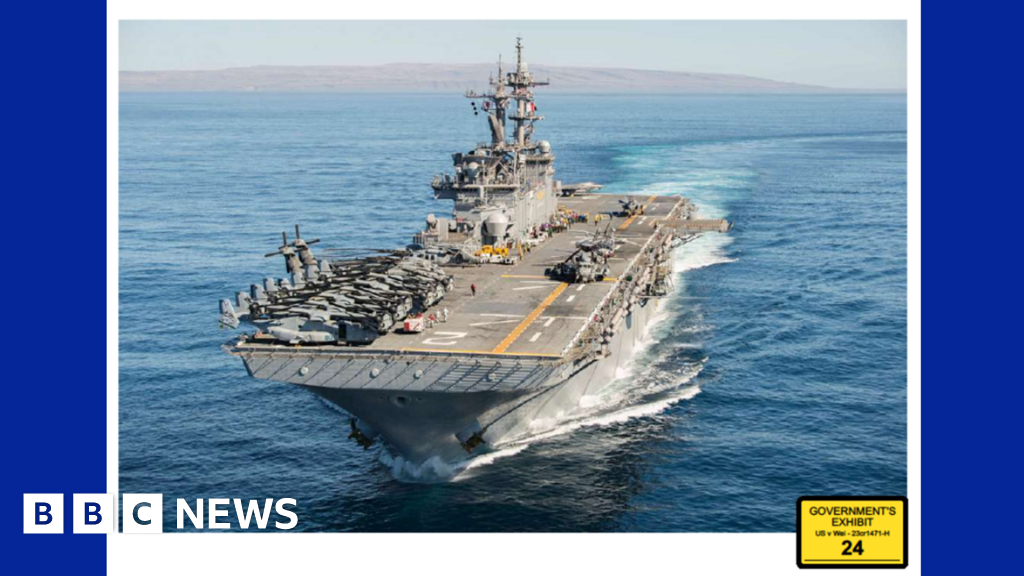Understanding Fulfilled Meaning in Shipping – A Quick Guide

When you see the term “fulfilled” in shipping, it indicates that your order has been processed and packed, but it hasn’t yet shipped. This status plays an essential role in managing your expectations as a customer. Comprehending this can help you navigate the fulfillment process more effectively, especially when tracking your order. To grasp its significance fully, let’s explore the key components and stages involved in fulfillment, in addition to how it differs from shipping.
Key Takeaways

- “Fulfilled” means the order has been processed and packed, but not yet shipped to the customer.
- This status helps manage customer expectations regarding delivery timelines and reduces support inquiries.
- Fulfillment involves multiple steps, including storage, picking, packing, and logistics management.
- Tracking information is usually provided after an order is marked as fulfilled.
- Understanding fulfillment versus shipping clarifies order status and enhances customer satisfaction.
What Does “Fulfilled” Mean in Shipping?

In shipping, the term “fulfilled” plays an essential role in the order management process. It signifies that your order has been processed, packed, and is ready for shipment, marking a significant step in the fulfillment process.
Nevertheless, a fulfillment status fulfilled doesn’t mean your package has been shipped; it simply confirms all necessary preparations are complete. Once marked as fulfilled, you typically receive tracking information, allowing you to monitor your package’s progress.
Comprehending this distinction is important, especially when comparing it to fulfillment status unfulfilled meaning, which indicates that an order hasn’t been processed yet. Knowing the difference helps you manage your expectations and stay informed about your order status, ensuring clear communication throughout the shipping process.
Importance of Fulfillment Status for Customers

Grasping fulfillment status is crucial for customers, as it directly impacts their shopping experience and satisfaction. Comprehending fulfillment status meaning helps you manage expectations, allowing you to anticipate delivery timelines and order processing stages. Effective communication regarding fulfillment status reduces support inquiries, whereas 85% of online shoppers say a poor delivery experience deters future purchases.
| Fulfillment Status | Meaning | Customer Impact |
|---|---|---|
| Processing | Order is being prepared | Informs you of order progress |
| Shipped | Order has been dispatched | Helps you anticipate delivery date |
| Fulfilled | Order is delivered | Confirms that your order arrived |
Knowing what does fulfilled mean delivered guarantees you stay informed, enhancing your overall experience and nurturing brand loyalty.
Key Components of the Fulfillment Process

Every order you place goes through a structured fulfillment process that guarantees timely delivery and customer satisfaction. This process includes four main steps: storage, picking, packing, and shipping.
Initially, inventory allocation matches your order with available stock, preventing a fulfillment status unfulfilled. After payment confirmation, which verifies the transaction’s legitimacy, the order is sent for fulfillment meaning it’s ready for processing.
During delivery execution, logistics management guarantees packages are shipped correctly and efficiently, often using tracking systems for real-time updates. Effective communication throughout these stages minimizes delays and keeps you informed, enhancing your overall satisfaction.
Stages of Fulfillment Status

In the shipping process, comprehending the stages of fulfillment status is essential for tracking your order effectively.
You’ll find that each stage, from “Order Received” to “Delivered,” represents a key point in your order’s progression, helping you manage your expectations.
Key Fulfillment Stages
Grasping the key fulfillment stages is crucial for ensuring an efficient shipping process.
The fulfillment path starts with the “Order Received” stage, where the seller acknowledges your order. Next, it shifts to “Order Processing,” during which items are prepared for shipment.
Once everything is picked and packed securely, the status changes to “Fulfilled,” indicating readiness for shipment, though the package may still be in the warehouse.
The “Shipment Created” stage follows, marked by the generation of a shipping label as it awaits carrier pickup.
Finally, the process culminates in “Shipped,” when the carrier receives the package, and “Delivered,” confirming that your order has reached its destination.
Comprehending these stages helps streamline your shipping experience.
Order Progress Tracking
Tracking the progress of your order is crucial for staying informed throughout the fulfillment process. Your order status progresses through several key stages.
Initially, “Pending” indicates that your order is received but hasn’t been processed yet. Once it enters the “Processing” stage, the items are being prepared for packing.
After packaging, the status updates to “Fulfilled,” meaning it’s ready for shipment, though it may still be in the warehouse. When the status changes to “Shipped,” the package has been handed over to the carrier, and you’ll typically receive tracking information.
Finally, “Delivered” confirms that your order has successfully reached your specified address, completing the fulfillment process and enhancing your overall experience by setting accurate expectations.
Differentiating Fulfilled From Shipped

When you see an order marked as “fulfilled,” it means the retailer has processed and packed your order, but it hasn’t necessarily left their location yet.
Conversely, “shipped” indicates that your package has been handed over to the shipping carrier, meaning it’s officially on its way to you.
Comprehending this distinction is key for managing your expectations about tracking information and delivery timelines.
Fulfilled vs. Shipped Definitions
Comprehending the nuances between “Fulfilled” and “Shipped” is essential for anyone traversing the online shopping experience. “Fulfilled” indicates that your order has been processed and packed, meaning it’s ready to be sent out, whereas “Shipped” signifies that the package has been handed over to the carrier and is on its way to you.
| Status | Description |
|---|---|
| Fulfilled | Your order is processed and packed, ready for shipment. |
| Shipped | Package handed to the carrier, now en route to your address. |
| Notifications | Fulfilled orders may provide tracking numbers; Shipped confirms pickup by the carrier. |
Understanding these definitions helps you manage expectations regarding delivery timelines and tracking updates.
Shipping Carrier Handoff
Grasping the shipping carrier handoff is essential for comprehending the difference between “fulfilled” and “shipped.”
During “fulfilled,” your order has been processed and packed, but it doesn’t guarantee that the package is with the shipping carrier.
Once your order is marked as “shipped,” it signifies that the package has officially been picked up by the shipping carrier and is now en route to you.
This distinction is critical for managing your expectations, as fulfillment indicates readiness for shipment, whereas shipping status confirms that your package is in transit.
Even though tracking numbers are often provided after fulfillment, these numbers may not become active until your order is officially shipped, further emphasizing the significance of grasping this handoff process.
Tracking Information Differences
Grasping the differences in tracking information between “fulfilled” and “shipped” statuses is crucial for managing your expectations during the shipping process. Here’s what you should know:
- Fulfilled means your order is processed and packed, but it hasn’t necessarily been handed over to the shipping carrier yet.
- Shipped indicates that your package is officially in transit and on its way to you.
- You may receive a tracking number after fulfillment, but it doesn’t guarantee that the package has left the fulfillment center.
Understanding these distinctions helps you avoid confusion and manage your expectations about delivery timelines.
Clear communication from retailers about these terms can prevent unnecessary inquiries and improve your overall experience.
Common Types of Fulfillment Status

When you track your order, you’ll encounter various fulfillment statuses that indicate its progress through the shipping process.
The “Pending” status shows that your order has been received but not yet processed. Once the order is being prepared for shipment, it changes to “Processing.”
When your package is handed over to a shipping carrier, you’ll see the status “Shipped,” meaning it’s on its way to you. Once it arrives, “Delivered” confirms that your order has reached its destination.
If you notice “Partially Fulfilled,” it means some items have shipped as other items are still being processed, which may require further communication.
Finally, “Canceled” indicates the order won’t be completed, either at your request or because of business decisions.
Understanding Partial Fulfillment

Partial fulfillment happens when only some items from your order are shipped, leaving others unfulfilled.
You’ll often receive updates about which items are on their way and which ones are still pending, helping you manage your expectations.
This can lead to multiple shipments, which might affect delivery times for different products, so it’s important to stay informed.
Definition of Partial Fulfillment
Comprehending the concept of partial fulfillment is essential for both retailers and customers, as it directly impacts the order experience.
Partial fulfillment occurs when only some items from an order have shipped as others remain pending. This situation is common in multi-item orders and can lead to several important outcomes:
- Customers receive notifications about which items have shipped, helping them stay informed.
- It allows customers to enjoy some products sooner rather than waiting for the entire order to be processed.
- Improved customer satisfaction may result from receiving part of the order quickly, reducing frustration.
Understanding this concept helps manage expectations, ensuring a smoother transaction process for everyone involved.
Communication on Partial Orders
Effective communication regarding partial orders plays a significant role in enhancing the customer experience during the shipping process. When only some items of an order are shipped, customers should be quickly notified to manage their expectations.
This notification often includes estimated shipping dates for the remaining items, allowing you to plan accordingly. Furthermore, retailers typically provide tracking information for shipped items, whereas clearly indicating which items are still awaiting fulfillment.
This transparency helps you understand that delays may arise because of inventory availability or processing times. By being informed about your order’s status, you can better navigate any potential inconveniences and maintain satisfaction with your shopping experience.
Good communication ultimately nurtures trust between you and the retailer.
Implications for Delivery Timing
When you place an order that includes multiple items, comprehending the implications of staggered delivery times can help you better manage your expectations.
Partial fulfillment means some items ship as others remain pending. Here are a few key points to reflect on:
- Notification: You’ll often receive updates about which items have shipped and what’s still on hold, keeping you informed throughout the process.
- Inventory Variations: Delays may happen because of varying inventory levels, which can affect when certain products are dispatched.
- No Delay on Available Items: Realizing that partial fulfillment won’t delay the shipping of available items can help you appreciate prompt deliveries, even if your entire order isn’t complete yet.
Effective communication from businesses is essential to improve your overall experience.
Tracking Your Order Fulfillment Status

How can you keep tabs on your order once it’s been placed? Tracking your order fulfillment status is straightforward and vital for staying informed.
Most e-commerce platforms provide tracking portals where you can monitor your order’s progression from “pending” to “processing,” “shipped,” and finally “delivered.”
You’ll typically receive notifications via email or through the retailer’s app, keeping you updated on any changes. Remember, the fulfillment status can change multiple times during the order lifecycle, so checking back regularly is significant.
Occasionally, delays in updates might occur because of processing times or syncing issues, but consistent monitoring guarantees you have the most current information on your order status.
This proactive approach helps you anticipate your shipment’s arrival.
Real-Time Updates and Delays

Real-time updates on your order fulfillment status are vital for maintaining transparency and keeping you informed throughout the shipping process.
Automated systems typically provide these updates, but delays can occur. Here’s what you might experience:
- Processing Delays: High order volumes or synchronization issues may slow down updates, affecting your tracking accuracy.
- Complex Shipping Processes: If your order involves special handling or verification, you could see a lag in status changes.
- Communication Importance: Regular updates help manage your expectations and reduce anxiety about delivery, making it significant for businesses to keep you informed.
Staying updated on your order’s expedition guarantees you have the information you need, even when delays happen.
Enhancing Customer Experience Through Fulfillment

Effective fulfillment processes can greatly improve your overall customer experience. By ensuring real-time updates on your order status, you can boost trust and reduce anxiety, especially since 39% of shoppers seek same-day delivery options.
Transparency in the fulfillment process minimizes inquiries, allowing you to focus on service quality. Automated tracking systems streamline operations, reduce errors, and provide a seamless passage from order placement to delivery.
Furthermore, timely notifications and updates cultivate empathetic engagement with customers, greatly boosting positive reviews and brand loyalty.
Managing Expectations During Fulfillment

Managing customer expectations during the fulfillment phase is fundamental to a smooth delivery experience. It’s crucial to understand that an order marked as “fulfilled” means it’s processed and packed, but not necessarily shipped yet.
To help manage expectations, consider these key points:
- Track Your Order: After receiving the fulfillment notification, anticipate tracking information that updates you on your package’s progress.
- Prepare for Delays: Be aware that delays may occur post-fulfillment, as this status indicates readiness for shipment, not actual handover to the carrier.
- Communicate Clearly: Familiarize yourself with what “fulfilled” means to reduce inquiries and set realistic expectations, enabling better planning for when to expect your package.
How Businesses Can Improve Fulfillment Processes

Improving fulfillment processes is essential for businesses looking to improve efficiency and customer satisfaction. Here are some strategies you can implement:
| Strategy | Benefit | Impact on Customers |
|---|---|---|
| Automated inventory management | Reduces stock discrepancies by 30% | Accurate order fulfillment |
| Utilize UPS providers | Boosts fulfillment speed | Lower shipping costs |
| Real-time tracking tools | Increases brand loyalty | 85% of shoppers prefer updates |
| Multiple shipping options | Caters to customer preferences | 39% willing to pay extra for speed |
Regularly analyzing fulfillment metrics can help you identify bottlenecks and improve operational efficiency. By adopting these practices, you’ll improve your fulfillment processes, leading to greater customer satisfaction and loyalty.
Conclusion

In conclusion, grasping the term “fulfilled” in shipping is essential for both customers and businesses. It indicates that your order is processed and ready for shipment, despite the fact that it hasn’t shipped yet. By recognizing this status, you can manage your expectations better and reduce inquiries about your order. Businesses can improve customer satisfaction by communicating fulfillment updates clearly, ensuring a smoother shopping experience. Ultimately, clarity in fulfillment processes cultivates trust and loyalty between customers and brands.
Image Via Envato
This article, "Understanding Fulfilled Meaning in Shipping – A Quick Guide" was first published on Small Business Trends
What's Your Reaction?
 Like
0
Like
0
 Dislike
0
Dislike
0
 Love
0
Love
0
 Funny
0
Funny
0
 Angry
0
Angry
0
 Sad
0
Sad
0
 Wow
0
Wow
0
































































































